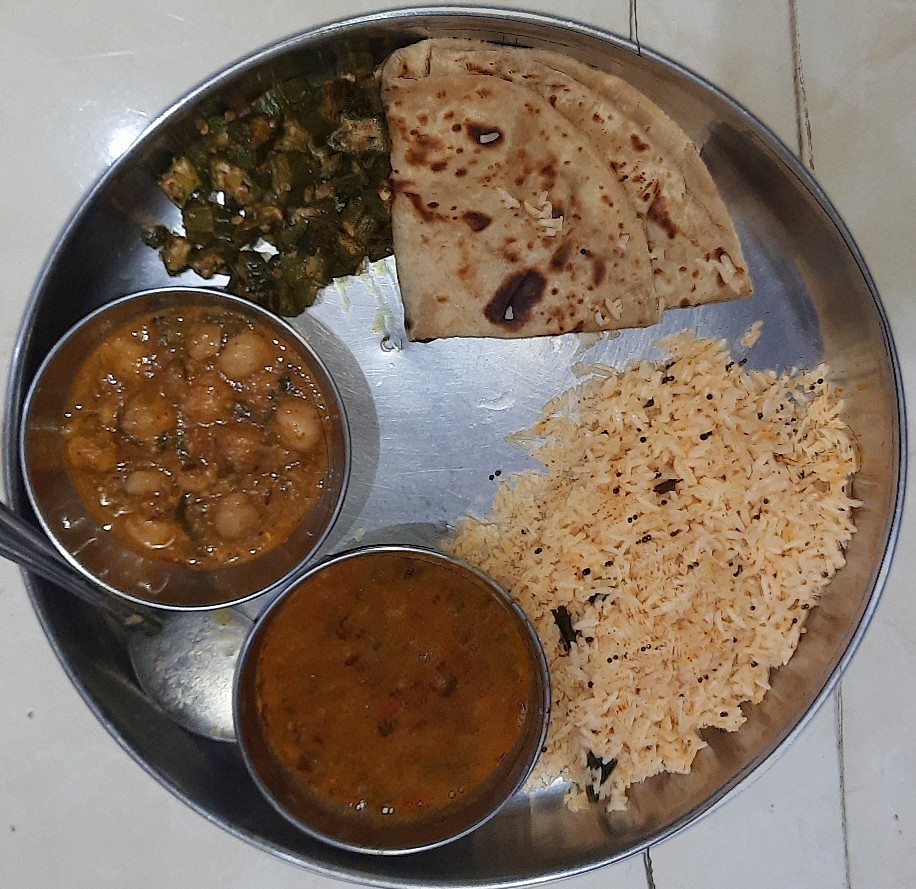Explore the Top 10 Tourist Destinations in Rajasthan – Land of Royals
Rajasthan, known as the "Land of Kings," is a premier tourist destination in India, renowned for its majestic forts, royal palaces, vibrant culture, and golden desert landscapes.
Located in northwestern India, Rajasthan attracts millions of tourists each year with its timeless charm and rich historical legacy.
From the pink-hued city of Jaipur to the blue alleys of Jodhpur, and the golden sands of Jaisalmer to the serene lakes of Udaipur, every city in Rajasthan offers a unique cultural experience. Tourists can explore iconic landmarks like Amber Fort, City Palace, Mehrangarh Fort, and the spiritual Pushkar Temple. Colorful bazaars, traditional Rajasthani cuisine, camel safaris, and folk performances make every visit unforgettable.
This guide highlights the top 10 tourist places in Rajasthan, detailing their historical and cultural importance, how to reach each destination via air, rail, or road, and accommodation options ranging from luxury heritage hotels to budget-friendly stays. Whether you're an international traveler or a local tourist, Rajasthan offers an enriching experience that blends history, adventure, and hospitality.
Discover the royal grandeur of Rajasthan and plan your perfect cultural getaway today.
 |
Jaipur, City Palace Complex -
A.Savin, FAL, via Wikimedia Commons |
Historical and Cultural Importance
Jaipur, the capital city of Rajasthan, is known as the Pink City for its rose-colored architecture. Founded in 1727 by Maharaja Sawai Jai Singh II, Jaipur is a planned city built according to Vastu Shastra principles. It is home to some of India’s most iconic monuments.
The Hawa Mahal (Palace of Winds) with its honeycombed façade allowed royal women to observe street life unseen. The City Palace, an architectural marvel, houses museums, courtyards, and royal residencies. Nearby lies the Jantar Mantar, a UNESCO World Heritage site, containing the world’s largest stone sundial.
How to Reach
Jaipur is well-connected by air, rail, and road. The Jaipur International Airport connects to major cities in India and some international destinations. Jaipur Junction is a key railway station on the Delhi-Mumbai route.
Accommodation
From budget guesthouses in Bani Park to luxury hotels like the Rambagh Palace and The Oberoi Rajvilas, Jaipur caters to all budgets. Heritage hotels also offer authentic Rajasthani hospitality.
2. Udaipur – The City of Lakes
Historical and Cultural Importance
Udaipur, founded in 1559 by Maharana Udai Singh II, is renowned for its romantic setting beside Lake Pichola. Known as the Venice of the East, the city is adorned with white marble palaces and tranquil lakes.
The City Palace complex, perched atop a hill, overlooks the city and lake. Jag Mandir and Jag Niwas (now the Lake Palace Hotel) float like jewels on the lake. The Bagore Ki Haveli museum offers insight into royal Rajasthani life.
How to Reach
Udaipur has a domestic airport, Maharana Pratap Airport, connected to Delhi, Mumbai, and Jaipur. Rail links connect it to major Indian cities, and luxury buses ply frequently.
Accommodation
Tourists can stay in luxurious lakefront hotels like Taj Lake Palace, as well as mid-range hotels around Lal Ghat. Budget accommodations and heritage homestays are also widely available.
3. Jodhpur – The Blue City
Historical and Cultural Importance
Jodhpur, once the capital of the Marwar kingdom, is known for its vivid blue houses that cover the city. Founded in 1459 by Rao Jodha, Jodhpur lies on the edge of the Thar Desert.
The Mehrangarh Fort, one of India’s largest, dominates the city’s skyline. Inside are palaces like Moti Mahal and Sheesh Mahal, with rich museum collections. The Umaid Bhawan Palace, still partially occupied by the royal family, is part luxury hotel, part museum.
How to Reach
Jodhpur is served by a domestic airport, well-connected railway station, and buses from Jaipur, Udaipur, and Delhi.
Accommodation
Options range from the opulent Taj Umaid Bhawan Palace to boutique hotels in the old city, and budget guesthouses in areas like Ratanada and Sardarpura.
4. Jaisalmer – The Golden City
Historical and Cultural Importance
Jaisalmer rises like a mirage from the Thar Desert, its sandstone buildings glowing golden under the sun. Founded in 1156 by Rawal Jaisal, this frontier town was once a trading hub on the ancient Silk Route.
The Jaisalmer Fort, a living fort with shops and homes, is a UNESCO World Heritage Site. Intricately carved Patwon Ki Haveli and Salim Singh Ki Haveli showcase Rajput architecture. Desert safaris to the Sam Sand Dunes offer camel rides, cultural performances, and sunset views.
How to Reach
The Jaisalmer Airport offers limited flights. The city is well-connected by train and road from Jodhpur, Jaipur, and Delhi.
Accommodation
Stay in desert camps, luxury hotels like Suryagarh, or traditional havelis turned hotels. Budget guesthouses inside the fort are popular among backpackers.
5. Pushkar – The Sacred City
Historical and Cultural Importance
Pushkar, located near Ajmer, is a holy town centered around Pushkar Lake. It is one of the few places in the world with a temple dedicated to Lord Brahma, the creator god in Hindu mythology.
Pushkar is famed for the Pushkar Camel Fair, held annually in November, where thousands of camels, horses, and cattle are traded amidst religious rituals and cultural performances.
How to Reach
The nearest railway station is Ajmer Junction (11 km). Buses and taxis frequently run between Ajmer and Pushkar.
Accommodation
Accommodations range from ashrams and dharamshalas to boutique hotels and tents set up during the camel fair. Pushkar is also popular with international backpackers seeking budget options and spiritual experiences.
6. Bikaner – The Desert Jewel
Historical and Cultural Importance
Founded by Rao Bika in 1488, Bikaner is renowned for its desert architecture, camel safaris, and Junagarh Fort, one of the few forts not built on a hilltop. Its ornate interiors include Karan Mahal and Anup Mahal.
Nearby lies the Karni Mata Temple, famously inhabited by thousands of rats considered sacred. The National Research Centre on Camel is another unique attraction offering camel rides and insights into camel breeding.
How to Reach
Bikaner has a railway station, with trains connecting it to Delhi, Jaipur, and Jodhpur. The nearest airport is in Jodhpur (250 km). Buses are available from major cities.
Accommodation
Bikaner offers a mix of heritage hotels, modern stays, and budget lodgings. The Laxmi Niwas Palace and Narendra Bhawan offer luxury experiences, while budget hotels are available near the railway station.
7. Mount Abu – The Hill Station of Rajasthan
Historical and Cultural Importance
Mount Abu is Rajasthan’s only hill station, located in the Aravalli Range.
A cool retreat from the desert heat, it has been a favored destination since the Raj era.
The Dilwara Temples, built between the 11th and 13th centuries, are masterpieces of marble carving. Nakki Lake, Guru Shikhar (Rajasthan’s highest peak), and Sunset Point are popular spots.
How to Reach
The nearest railway station is Abu Road (28 km), connected to Delhi, Ahmedabad, and Jaipur. Taxis and buses are available from the station.
Accommodation
Mount Abu has a range of resorts, hill lodges, and budget hotels. The Palace Hotel – Bikaner House and Cama Rajputana Club Resort provide luxury with heritage.
8. Chittorgarh – The Citadel of Courage
Historical and Cultural Importance
Chittorgarh tells stories of valor, sacrifice, and Rajput pride. It was the capital of Mewar under rulers like Rana Kumbha and Maharana Pratap. The Chittorgarh Fort, one of India’s largest forts, stands atop a 180-meter hill and spreads over 700 acres.
The fort houses Vijay Stambh (Victory Tower), Kirti Stambh, palaces of Rani Padmini and Rani Karnavati, and several temples. The fort witnessed three major sieges and acts of jauhar.
How to Reach
Chittorgarh is well-connected by rail and road to Udaipur, Jaipur, and Delhi. The nearest airport is Maharana Pratap Airport in Udaipur (90 km).
Accommodation
There are several mid-range and budget hotels in the city. Hotel Padmini, Castle Bijaipur, and local guesthouses provide affordable and traditional stays.
9. Ranthambhore – The Wilderness Retreat
Historical and Cultural Importance
Ranthambhore is one of India’s premier wildlife sanctuaries, known for its population of Royal Bengal Tigers.
The Ranthambhore Fort, dating back to the 10th century, sits within the park, offering a blend of natural beauty and heritage.
The park is home to leopards, sloth bears, crocodiles, and hundreds of bird species. It is divided into different zones for safari experiences.
How to Reach
The nearest town is Sawai Madhopur, well-connected by train to Jaipur and Delhi. The nearest airport is Jaipur Airport (160 km).
Accommodation
From luxury jungle lodges like Aman-i-Khas and The Oberoi Vanyavilas to mid-range resorts and eco-friendly camps, accommodation caters to all. Budget hotels are available near Sawai Madhopur.
10. Ajmer – The Spiritual Gateway
Historical and Cultural Importance
Ajmer is one of India’s most sacred pilgrimage sites. It is home to the Ajmer Sharif Dargah, the tomb of Sufi saint Khwaja Moinuddin Chishti, which draws millions of devotees from all religions.
The city is also known for the Adhai Din Ka Jhonpra, an ancient mosque, and the Ana Sagar Lake. Ajmer is considered a symbol of communal harmony.
How to Reach
Ajmer is well-connected by train and road. The nearest airport is in Jaipur (135 km). Buses and taxis are available from Pushkar and Jaipur.
Accommodation
Tourists can choose from 3-star hotels, lodges, and dharamshalas near the dargah. Budget hotels cater to pilgrims, while Pushkar nearby offers more upscale lodging.
Conclusion
Rajasthan is not just a destination—it is an experience carved in stone, wrapped in silk, and sung in folk melodies.
From the lakes of Udaipur to the sand dunes of Jaisalmer, from the sacred ghats of Pushkar to the royal splendor of Jaipur, each location offers a unique tale woven with threads of history and culture.
This is the food thali of rajasthan. it consists of many mouth watering dishes like paneer, paratha, papad, rice etc. rajasthani dishes are famous all over India. it is very much spicy due to its hot climate and condition.
Accessibility is well-established across the state, with strong rail and road networks and increasing air connectivity. Accommodations range from regal palaces to eco-camps, making Rajasthan accessible for both budget-conscious travelers and luxury seekers.
For those who seek to understand the pulse of India—its courage, its romance, its artistry, and its spiritual diversity—Rajasthan remains an unmissable chapter in the traveler’s journey.






















